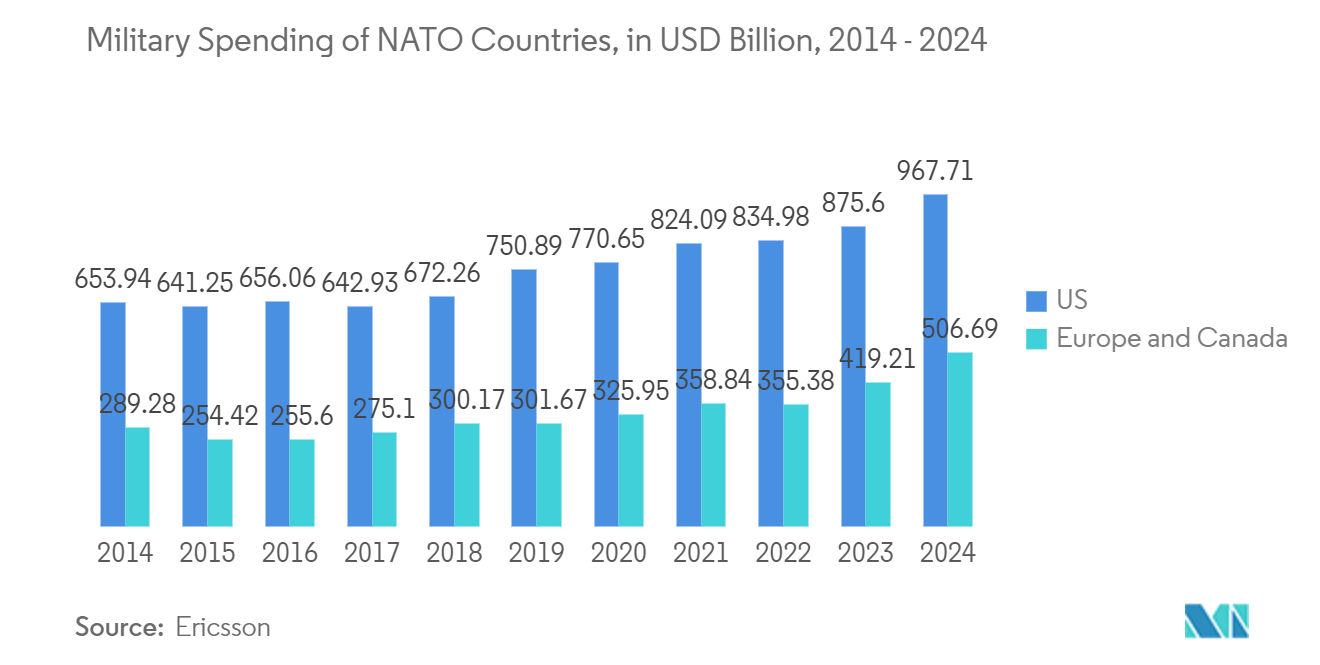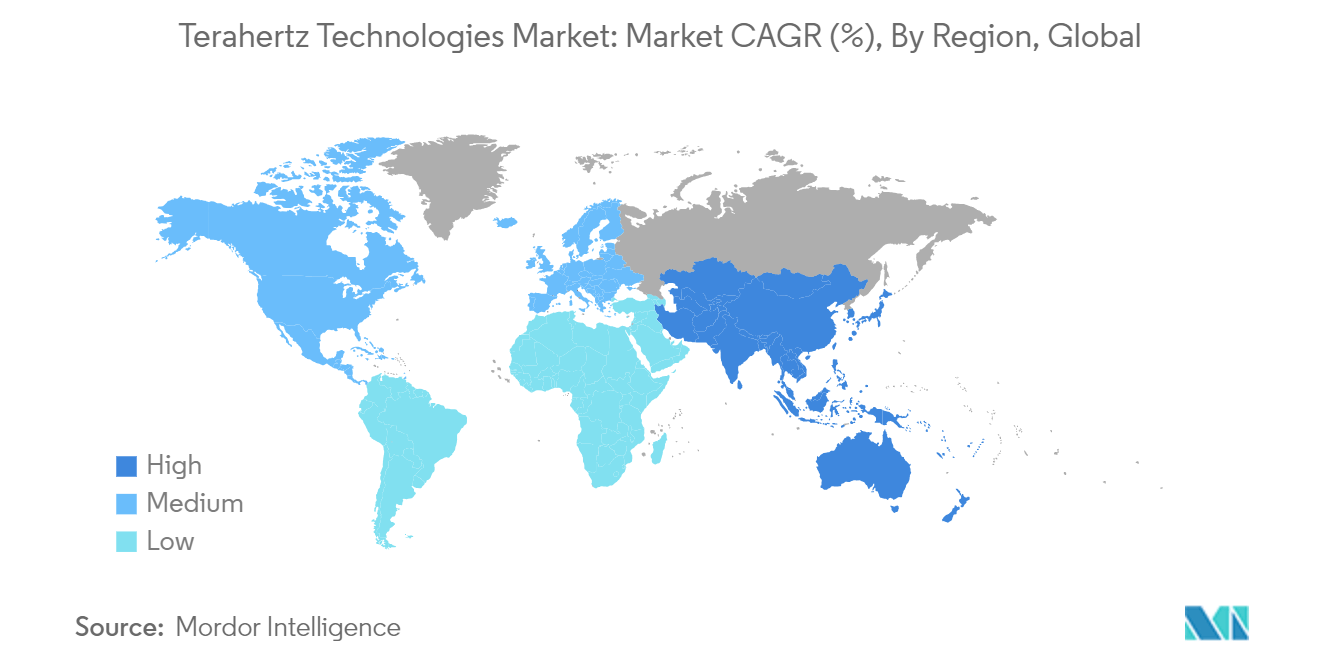Market Trends of Terahertz Technologies Industry
Defense and Security to be the Largest End User
- China's past pursuits of foreign and dual-use technologies suggest that the country will continue to grow its Terahertz technology in competition with other international powers such as the US. The radiation produced, or 'T-rays,' can penetrate the composite metals when examining the underlying aircraft metals. These metals are specifically used for certain aircraft types, making the process of finding and positively identifying any detectable substances more difficult.
- Furthermore, terahertz can also assist in personnel recovery missions for downed groups or aircrews in unfortunate situations wherein any rescue or assistance is required. In a degraded visual environment such as dust storms in the Middle East, Terahertz's smaller wavelength size and operating frequencies make it an ideal choice for tracking and finding human-sized targets of interest for recovery.
- As per the data published by NATO, among NATO countries, the United States has the highest military expenditure in 2024. The United States allotted around USD 967.7 billion as military expenditure.
- Future unmanned aerial vehicle (UAV)-assisted wireless communication systems are projected to use wide bandwidths obtainable at terahertz frequencies to enhance system throughput. Terahertz radiations play a major role in the adoption of surveillance systems in the defense sector for security screening to uncover hidden weapons, as the demand for these solutions is increasing, along with the proliferation of technology in the sectors.
- For instance, technological developments have led to the development of unmanned airborne surveillance systems or drones. Furthermore, the government’s high focus on developing drones is expected to support the market growth in the defense sector. For instance, in November 2023, Spain ordered 27 SIRTAP tactical unmanned aerial systems (UAS) from Airbus in a deal “close to” GBP 495 million (USD 543 million), marking a major modernization of airborne intelligence, surveillance, and reconnaissance (ISR) capabilities for the country’s army and air force.
- In October 2023, Germany ordered Rheinmetall Reconnaissance drones for USD 210 million. Rheinmetall will deliver Luna NG reconnaissance drone systems to the German Army for an estimated GBP 200 million (USD 210 million). A total of 13 systems, including a pilot system, will be delivered beginning in the second quarter of 2025.

North America Holds Largest Market Share
- The United States is a key market for terahertz technologies, primarily owing to the growing homeland security issues, investments in defense, and R&D. In addition, the stringent government regulations regarding the safety and production of aerospace technologies in the US and the growing automotive and aerospace industries are driving the market for Terahertz technologies in the regional market.
- According to the data provided by the Aerospace Industry Association, in 2023, the American A&D industry generated over USD 952 billion in total sales, which is up 6.7% over 2021 levels, and of this, USD 537 billion was generated through direct industry output, and USD 415 billion was generated through indirect output, demonstrating the value of the domestic A&D supply chain. In total, the industry generated USD 418 billion in economic value or 1.65% of the total nominal GDP of the United States, up nearly 7.0% above 2021. Such heightened growth from the aircraft industry is a significant driver for the growth of inspection systems based on terahertz technology.
- The increase in helicopters and commercial aircraft production in the United States is expected to drive the market. The US aerospace industry exports more than 60% of all aerospace production.
- US Air Force researchers are looking into technologies for future line-of-sight air-to-air communications and networking at frequencies higher than 100 GHz to help aircraft exchange mission-critical battle-management information. For the same, Air Force experts are expected to test terahertz communication technologies through modeling and simulation.
- Over the past several years, working in the terahertz (Terahertz) range has offered unique opportunities in various applications, including biomedical imaging, telecommunications, and advanced sensing systems, leading companies to invest in its advancements. For instance, NYU Tandon’s Vertically Integrated Projects (VIP) program involves long-term multidisciplinary initiatives emphasizing hands-on research and innovation. This research has been carried out in a next-generation lab for cutting-edge terahertz (Terahertz) measurements and research funded by the USD 3 million NSF: Major Research Instrumentation (MRI) grant.
- The Terahertz Lab is considered as one of the most advanced research facilities of its kind in the world, with state-of-the-art equipment currently facilitating researchers for studying the properties of devices, circuits, and materials up to 500 GHz, with the lab is planned to expand to 1 Terahertz and beyond with future enhancements.


